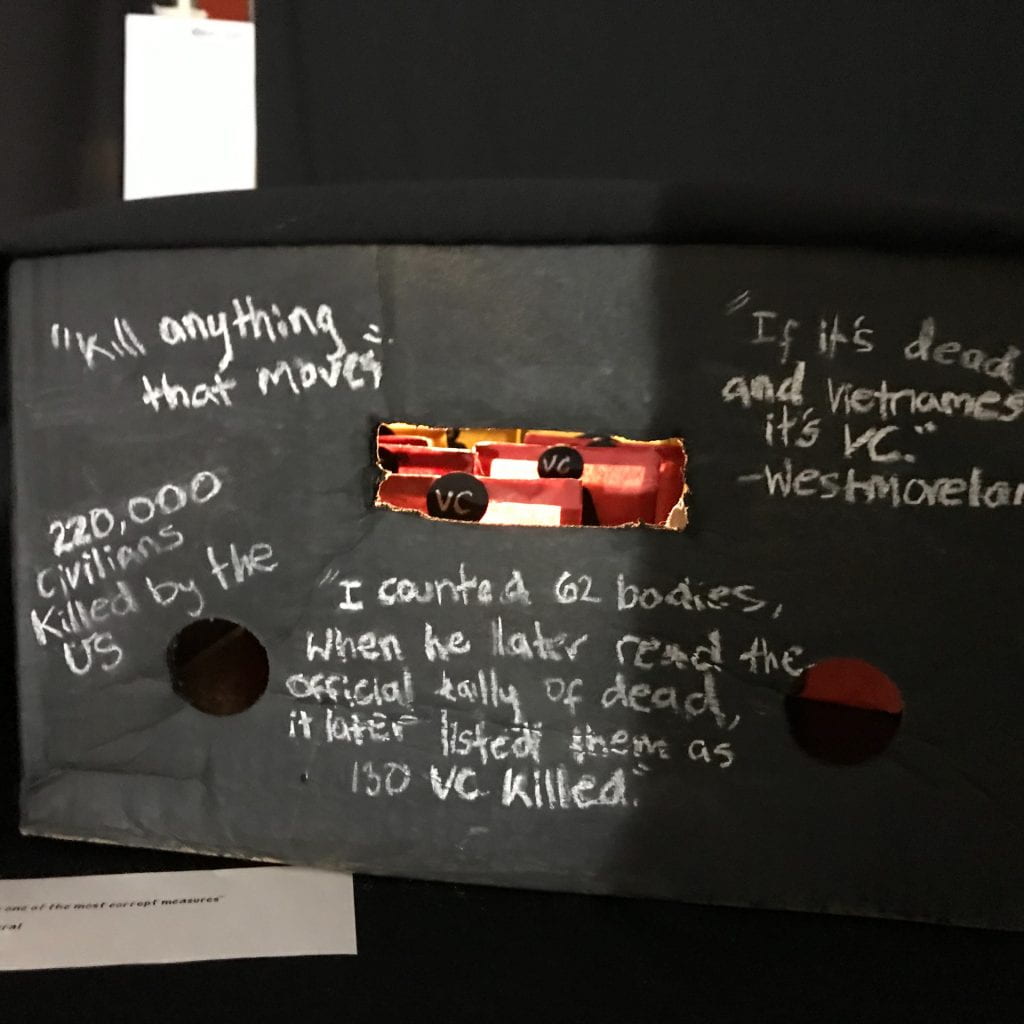For our final unit in grade 11 we went in depth into the Vietnam war. As you know from previous posts, every year we participate in two exhibitions every year. This year we presented our themes of the Vietnam war in a way that had never been done before in PLP, using conceptual art.
Now the first question you are probably wondering is what is conceptual art?
My Conceptual art:
Examples of conceptual art:
Interestingly we looked at the neuroscience behind it:
The Research…
We did a lot of lessons on conceptual art and some activities where we had to try and figure out what the artists story was. It was pretty challenging at times to try and figure out the idea behind it. It was interesting to hear everyone’s perspectives of the story, since everyone had a different take on the art. That just shows that with conceptual art, the audience can interpret the story how they want. I was surprised on how many stories can be made from just one piece of art.
With all that knowledge of conceptual art, our task was to create conceptual art to represent an aspect of the Vietnam war. We learned about the Vietnam war in class an then our teachers had to go on a trip with another class. That being said, we were given the resources we needed to learn about the Vietnam war independently. Our teacher had spilt up the war into themes (ex; leadership and decision making, who fought in the war, how the war was fought etc).
We were told that when they come back, we would have an “exam” on the Vietnam war… We thought they were kidding but they came back and gave us a test, half multiple choice, half written. We never received our marks for the written but lets just say I should have studied more for the multiple choice!
By the time they got back, we were able to sort the class out into themes. I chose to focus on leadership and decision making. When we were learning about the war, there was a lot about Lyndon B. Johnson (LBJ) sending troops to Vietnam. I thought it would be interesting to do some further research on his decision to deploy more troops. Something that I was unaware of, was how fixated LBJ was on the number of Viet Cong killed vs US killed. He even manipulated the statistics to make it look like more Viet Cong where dead when of those numbers weren’t just Viet Cong but civilians and US troops.
“I counted sixty-two bodies, when he later read the official tally of dead, he found that it listed them as 130 Viet Cong killed”(Turse, p 210).”
For our art work, since we were creating a gallery we had to write a historical and ethical judgment piece to go along with our art. The historical paragraph basically explains what my piece is and what it is all about. To constrict these paragraphs we went through a process of getting our pitch approved. The first pitch was not to satisfactory so I had to revise my writing. I actually decided to slightly change my idea and I did more research on my new topic so I could write a well written paragraph.
The Building…
My art work wasn’t too difficult to build. However, it was definitely time consuming. It involved multiple trips to the Dollar Store to pick up more paint or lollipop sticks. Essentially I used a giant card board box to be the tunnel and then I just create a bunch of people representing Viet Cong, civilians and US troops (read historical paragraph to find out what they mean in my piece). It was challenging to place the figures in the tunnel so you could see them all. I also had to find a very bright light to light up all of the people. I chose to use tissue paper so that it would look cool when a light is shining from the back.
The exhibition…
For the exhibition we had the trouble of dividing up us up into rooms. We wanted people with the same sort of ideas to be in the same room. Mimi, Simon and I all had a similar topic.
We were focused on the troops that were sent, therefore we were all in the same room. We had our usual chaos an hour before the exhibition started with not finding enough curtains and making our room fit the theme.
Over all I would say that the exhibition was a success! We got a lot of really positive feed back on our projects. Also as I was explaining my project to the parents, I realized how much I really learned about the Vietnam war. I had a quick look at my peers projects and it really showed that I think our grade got a good grasp on the Vietnam War.










